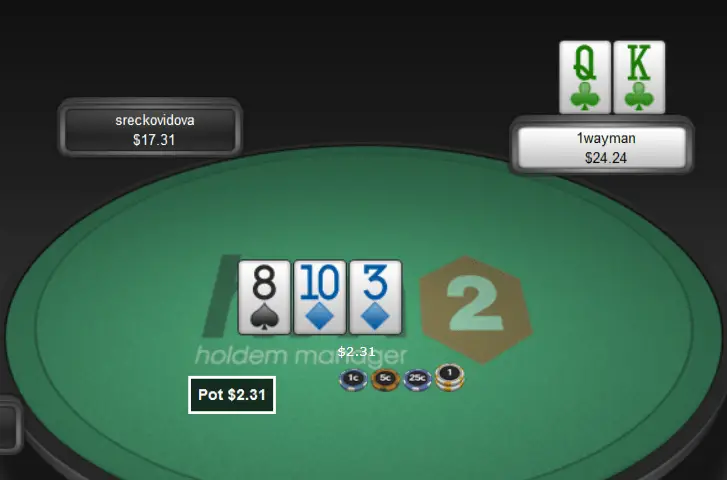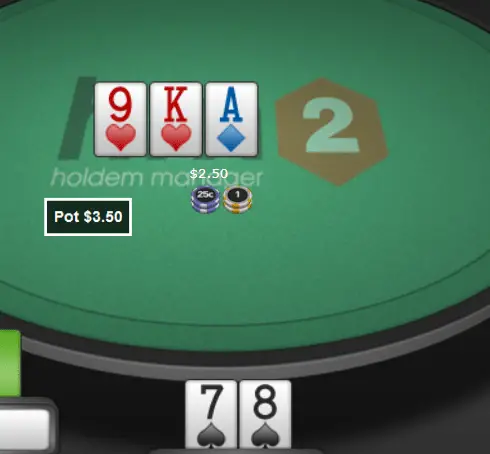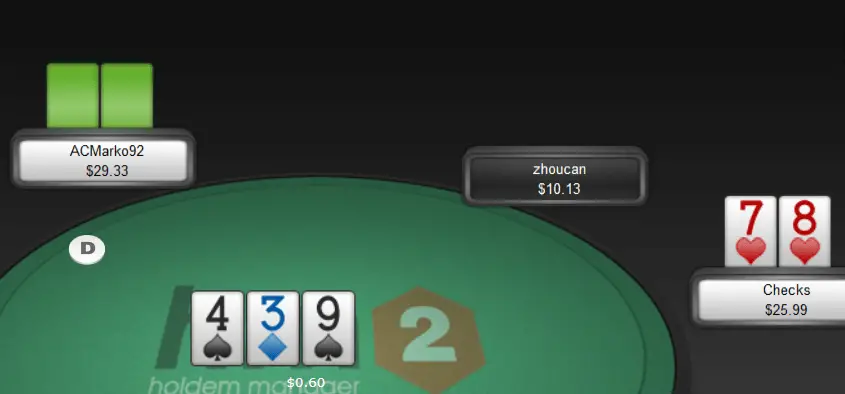If you are starting your poker career, you probably heard a lot of new words and phrases. For a lot of them, you most likely don’t even know what they mean. Not yet. In this article, I will explain a special kind of draw in poker, which is called a backdoor straight draw.
Backdoor straight draw means that you do not have a straight draw yet on the flop, but you need a specific card on the turn, to give you a straight draw in the first place.
Backdoor straights and backdoor flushes are much more disguised hands than the ones that already have a draw on the flop. So even if you don’t have a made hand on the flop yet, don’t worry. Pairs in no-limit Texas hold ’em are not so easy to make.
If you hold a hand with a lot of backdoor potential, this could be quite a good thing. For a beginner player, this probably all sounds very complicated, but don’t worry. In the rest of the article, I will explain different types of backdoor straight draws and give you some examples.
Meaning of backdoor in poker
Players refer to backdoor in poker when you first need to hit a specific card on the turn to give you some sort of a draw and then hit another specific card on the river to complete the draw and have a made hand.
It can be anything from a backdoor straight draw, backdoor flush draw, backdoor gutshot to even backdoor full house. Although it is most often used with backdoor straight and backdoor flush terms. The term backdoor can only be used on the flop, as it is only then that you need two specific cards to complete the hand – look at the examples for backdoor straight draw below.
Backdoor straight draw with overcards on the flop
Backdoor gutshot straight draw

Let’s say that you are playing in a 6-max online game. Everyone folds to you on the button. You are dealt King of clubs (Kc) and Queen of clubs (Qc). You raise to 3 big blinds, the small blind folds, and the big blind calls your raise. The flop comes down 9 of diamonds (9d), 8 of hearts (8h), and 3 of spades (3s). Big blind checks to you. You don’t have much on the flop but two overcards and backdoor gutshot straight draw.
You can hit your backdoor straight if the turn and the river are both a Jack or a Ten in any order. You make a standard continuation bet of one half of the pot and your opponent calls. You were hoping to take the pot down, but your opponent had different plans. The turn is a Jack of spades (Js). This card gives you a gutshot straight draw. This means that now you can hit a straight on the river if the river is a ten.
This gives you 4 outs or roughly 9% to hit the draw. Big blind checks again, and you check behind. The river is Ten of hearts (Th). Opponent checks for the third time, you make a large river bet with a straight, and he calls with a set of threes. He trapped on the flop with a set, wanting to go for a check-raise on the turn, but you checked back and hit your straight on the river.
Backdoor open-ended straight draw

Now let’s change the flop a little. Action is the same; it’s folded to you on the button. You raise to 3 big blinds, small blind folds, and the big blind calls. This time the flop comes down Th, 8h, and 3c. Again you only have two overcards and a backdoor straight draw. Opponent checks to you and you make a continuation bet of one half of the pot. He calls, and this time the turn is the Js. Now you have an open-ended straight draw.
This time you can make your straight with not just four but eight cards. You will hit your draw about 18% of the time. Now any ace or any nine will give you a straight. Again you both check, and the river is a beautiful Ace of spades. This time the opponent bets almost the size of the pot. With a nut straight, you make a big raise.
He thinks for a while and makes a call. He shows you Ace of diamonds (Ad) and Ten of clubs (Tc) for two pairs, and you take down a big pot. Again you only had a backdoor straight draw on the flop and got there with specific cards hitting the turn and the river.
Backdoor straight draw with undercards on the flop

This time you are playing in a passive live 9 handed game. Two players limp in front of you, and you limp behind on the button with eight of clubs (8c) and seven of clubs (7c). Small blind calls and big blind checks. The flop comes down nine of clubs (9c), Ace of diamonds (Ad), and King of spades (Ks). Now that you have three connected cards, you have a lot more backdoor straight draws.
You will hit a straight with the following cards:
- any six on the turn will give you an open-ended straight draw
- any ten on the turn will give you an open-ended straight draw
- any four will give you a gutshot straight draw
- any Jack will give you a gutshot straight draw
In addition to that, any club on the turn will now also give you a flush draw. The action gets checked around to you on the button. You check behind and the turn is a nice looking six of clubs (6c). So the board now is 9c Ad Ks 6c. You have a big draw with two cards ( ten of clubs or five of clubs) actually giving you a straight flush.
Again it gets checked around to you. Because of so many players in the hand and passive table, you check one more time and hope on another excellent river. The dealer turns over 5 of diamonds (5d), giving you the nuts again. A player in front of you bets, you raise and get called in two spots. One of the players has pocket fives for a rivered set and the other has two pairs with 96 of diamonds.
Backdoor straight draw with cards in the middle

We will take the same hand and action as in the previous example, but change the flop a little. The flop comes down 9c 3d 4s. Again any six or any ten will give you an open-ended straight draw and any five, and any jack will give you a gutshot straight draw. But this time you don’t get so lucky. The turn is the Ace of hearts (Ah), and you don’t have any draw on the turn. This makes our play simple; to just give up on the hand.
Conclusion
As you can see, there is usually a lot of backdoor straight draw possible on the flop, depending on the board. The main thing you should focus on is flop texture and your hand. If you have overcards on the flop, your backdoor straight draws will always draw to the nuts. This means that if you hit your straight, nobody can have a higher straight.
If you have undercards on the flop, none of your straights will be to the nuts. You will have to be careful that someone doesn’t have a higher straight.
If you have cards in the middle, some of your straights will be nut straights and some won’t.
Very often, a backdoor straight draw is not the main thing you were hoping to hit when you raised pre-flop. It is just an addition to your hand. That is why overcards are much stronger than undercards. You can also hit your pair on the turn or the river and beat your opponent. Suited cards also matter a lot. You can turn your flush draw just like in example 2. On the contrary, you have to be very careful if the flop already has a flush draw possible. Now some of your straight outs can give your opponent a flush, and you can lose a big pot if you are not careful.
As you already noticed, backdoor draws are quite often, but they complete rarely. So don’t count on them every time. But when you do hit your backdoor draw on the river, it will be well disguised.



